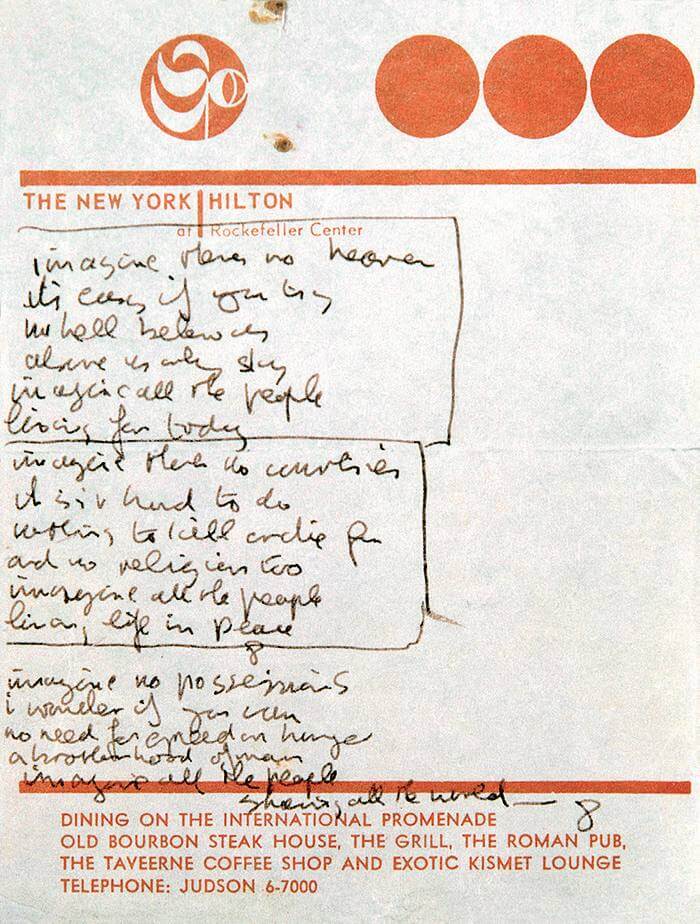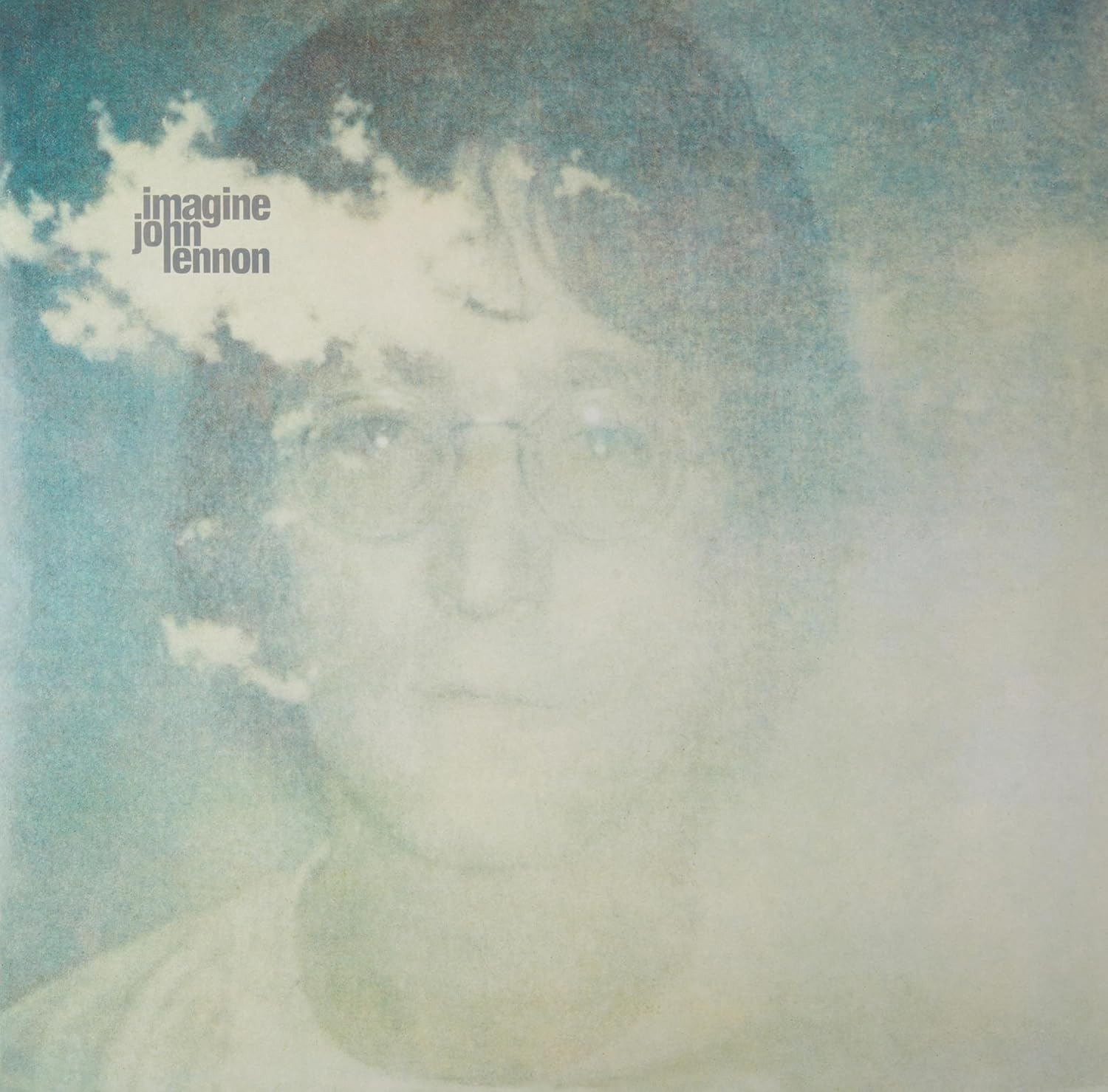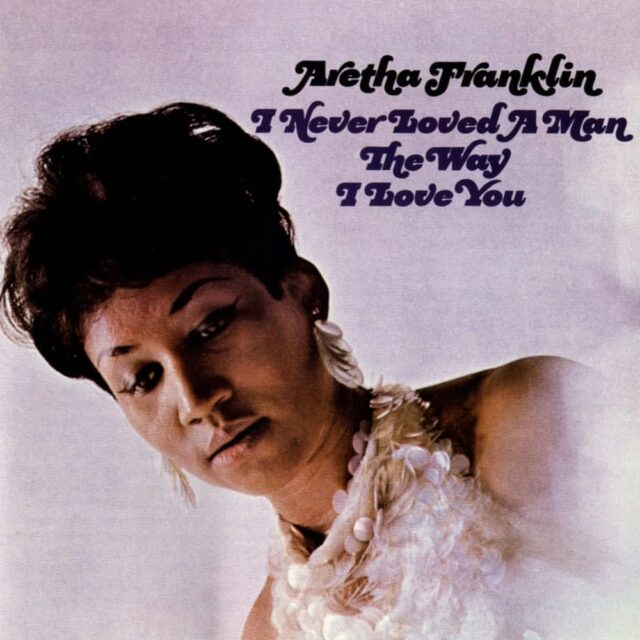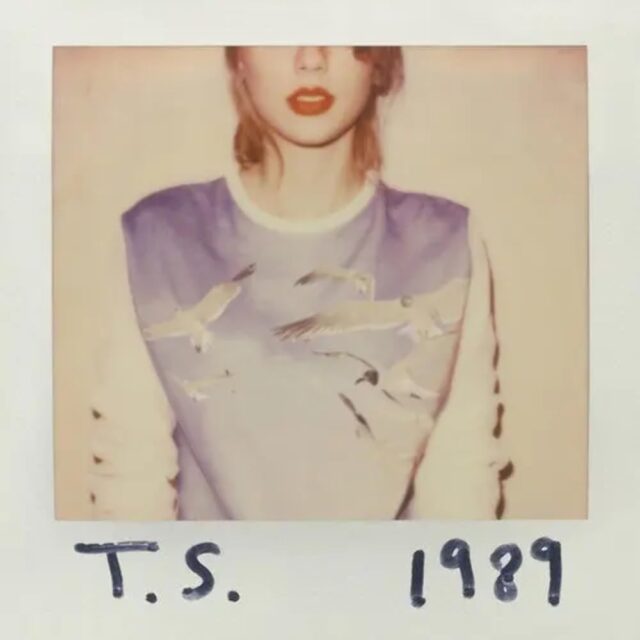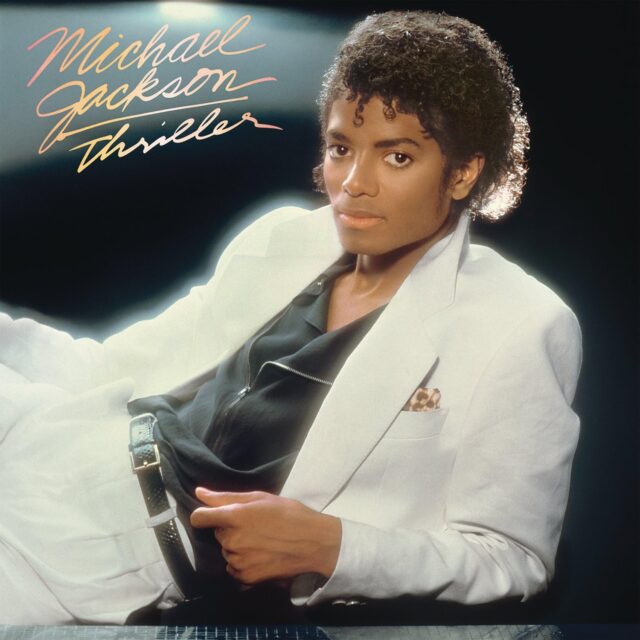John Lennon saw the world.
Born October 9, 1940, Lennon primarily lived with his Aunt Mimi at 251 Menlove Avenue in Liverpool, a city of approximately 737,000 people. This is where he spent his teenage years.
Although he had limited contact with his mother, Julia, she visited often and was influential in his early interest in music by playing records and teaching him songs by Elvis Presley, Fats Domino, Buddy Holly, Little Richard, and others. Lennon also sang in the St. Peter’s Church choir until age 14, and his mother showed him how to play the banjo. In 1956, when Lennon was 15 or 16, she bought him his first guitar.
That same year, Lennon formed a group with his schoolmates from Quarry Bank High School, where he was already known for his rebellious streak. He called the band The Quarrymen. The group played local parties and church celebrations, including a show at St. Peter’s Church on July 6, 1957, where Lennon first met Paul McCartney. McCartney soon joined the band, followed by George Harrison in early 1958.
By mid-August 1960, The Quarrymen had evolved through several names, including Johnny and the Moondogs, the Beatals, the Silver Beetles, the Silver Beats, and the Silver Beatles. Eventually, they became the Beatles, with Paul McCartney on vocals and rhythm guitar, George Harrison on lead guitar and vocals, Stuart Sutcliffe on bass, and Pete Best on drums.
On August 17, 1960, the Beatles departed for a 48-night gig at the Indra Club in Hamburg, Germany, which marked their official debut. However, due to noise complaints, the Indra Club closed on October 3, 1960, right after the Beatles’ final performance. The next day, the band moved to another Hamburg club called the Kaiserkeller, where they played 58 more consecutive nights.
Hamburg’s population at the time was approximately 1.8 million people.
John Lennon’s worldview expanded.
The Beatles returned home and began building their reputation in Liverpool by performing regularly at a small basement venue called the Cavern Club. Their first show there was a low-key lunchtime session on February 9, 1961. As their local following grew, bassist Stuart Sutcliffe chose a different path, deciding to leave the band to pursue painting full-time.
Months later, on Thursday, November 9, 1961, Brian Epstein, manager of Liverpool’s NEMS record store, became curious about the Beatles after customers repeatedly requested the “My Bonnie” single, a record the band had played backup on with Tony Sheridan in Hamburg. Wanting to see what the buzz was about, Epstein attended a lunchtime show at the Cavern Club.
“I was immediately struck by their music, their beat, and their sense of humour on stage – and, even afterwards, when I met them, I was struck again by their personal charm. And it was there that, really, it all started,” said Epstein.
By mid-December 1961, Epstein formally became their manager and transformed their image from leather-clad rockers into suited musicians. In May 1962, he secured them a recording contract with Parlophone Records, a label under EMI, with producer George Martin. Their first recording session was set for June 6, 1962.
While in the studio, Martin was not impressed with Pete Best’s drumming, feeling it didn’t suit their evolving sound. On August 16, 1962, Epstein, with agreement from the other Beatles, fired Best and replaced him with Ringo Starr, who had better chemistry with the band.
“Ringo is a much better drummer and he can smile — which is a bit more than Pete could do,” stated Martin.
The Beatles’ first single, “Love Me Do,” was released on October 5, 1962, and set the foundation for the band beyond Liverpool. They began recording their debut album, Please Please Me, at Abbey Road Studios in London on February 11, 1963.
As the band gained national exposure, they released their second, third, and fourth singles within 10 and a half months. “Please Please Me” was released on January 11, 1963, “From Me to You” on April 11, 1963, and “She Loves You” on August 23, 1963, which soared to No. 1 in the UK within weeks.
The band moved to London, staying at Hotel President and later at “Flat L” at 57 Green Street, the only residence where all four Beatles lived together. They were now at the center of nearly 7.8 million people.
Once the Beatles conquered the UK, their popularity exploded. By the time they appeared on The Ed Sullivan Show on February 9, 1964, the phenomenon had a name: “Beatlemania.” The attention on the “Fab Four” reached unprecedented levels, sweeping across the globe as a cultural phenomenon in fan intensity, attendance, and media coverage.
From the start of their recording career in 1962 until they disbanded in 1970, the Beatles released 13 official studio albums.
In that time, the band performed for millions of people in 16 territories, including the United Kingdom, Ireland, West Germany, the Netherlands, Denmark, Sweden, France, Italy, Spain, the United States, Canada, Hong Kong, Australia, New Zealand, Japan, and the Philippines.
After the Beatles split, Lennon expanded his travels by visiting Gibraltar for his marriage to Yoko Ono, songwriting in Bermuda, and visiting South Africa.
“I don’t miss England like I didn’t miss Liverpool when The Beatles moved to London. England will always be there if I choose to go back,” said Lennon in New York, looking back on his travels.
John Lennon saw the world in a way few ever do. Over seven years, he was exposed to more cultures than most people experience in a lifetime, transforming him from a working-class Liverpool youth into an international figure.
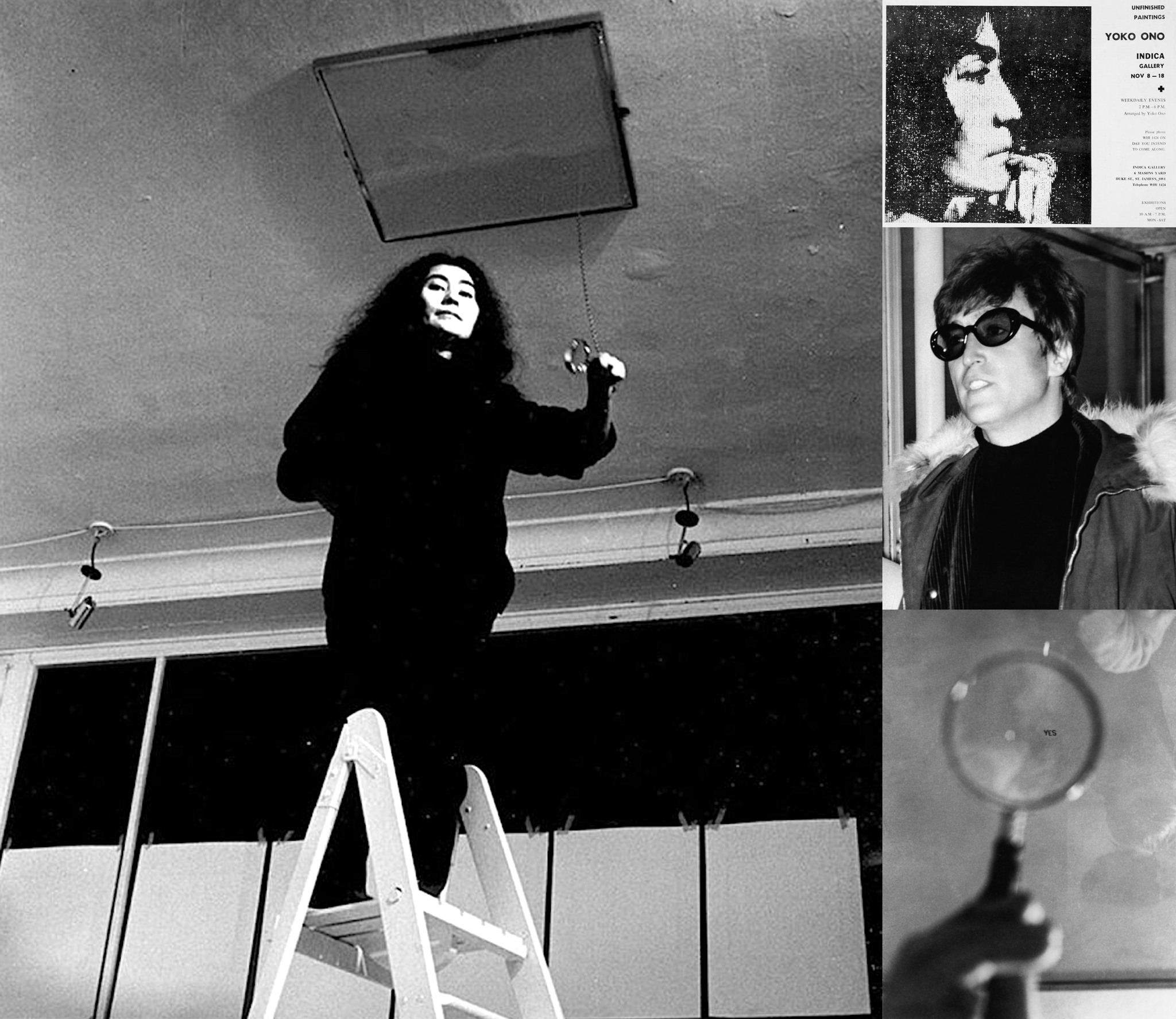
The ladder piqued his curiosity
On the evening of November 7, 1966, Lennon walked into the Indica Gallery, in the basement of the Indica Bookshop, in London, where a Japanese artist named Yoko Ono was setting up her conceptual art show Unfinished Paintings and Objects.
“John Dunbar, who was married to Marianne Faithfull, had an art gallery in London called Indica, and I’d been going around to galleries a bit on me off days in between records, also to a few exhibitions in different galleries that showed sort of unknown artists or underground artists,” said Lennon. “I got the word that this amazing woman was putting on a show… So I went to a preview the night before it opened. I went in, she didn’t know who I was or anything, and I was wandering around… There was a fresh apple on a stand, this was before Apple, and it was two hundred quid to watch the apple decompose. But there was another piece that really decided me for-or-against the artist: a ladder which led to a painting which was hung on the ceiling. It looked like a black canvas with a chain with a spyglass hanging on the end of it. This was near the door when you went in. I climbed the ladder, you look through the spyglass and in tiny little letters it says ‘yes’. So it was positive. I felt relieved. It’s a great relief when you get up the ladder and you look through the spyglass and it doesn’t say ‘no’ or ‘fuck you’ or something, it said ‘yes’.”
Ono and Lennon struck up a conversation for the first time.
“Then I went up to this thing that said, ‘Hammer a nail in.’ I said, ‘Can I hammer a nail in?’ and she said no, because the gallery was actually opening the next day. So the owner, Dunbar, says, ‘Let him hammer a nail in.’ It was, ‘He’s a millionaire. He might buy it,’ you know. So there was this little conference and she finally said, ‘OK, you can hammer a nail in for five shillings.’ So smart-ass here says, ‘Well, I’ll give you an imaginary five shillings and hammer an imaginary nail in.’ And that’s when we really met. That’s when we locked eyes and she got it and I got it and that was it,” said Lennon.
The two, while both married with children, maintained contact throughout 1967, and in September of that year, Ono sent Lennon a copy of her book, Grapefruit: A Book of Instructions and Drawings, which he kept by his bedside. The following month, Lennon showed his support and provided funding for her Half a Wind exhibition at the Lisson Gallery.
“After I first met Yoko, I sort of blasted open in my head. She encouraged me to make films, make more far-out music, gallery exhibitions, make more of the art I was doing privately. Anything I was doing, she encouraged me to do it,” said Lennon.
“We’re both very shy, you know, so the next time we met was a Claes Oldenburg opening with a lot of, you know, like soft—what was it—objects, like cheeseburgers made out of rubber and garbage like that,” recalled Lennon. “And we met again then and sort of made eye contact, but it was 18 months, two years before we really got together.”
After manager and “Fifth Beatle” Brian Epstein’s death in August 1967, the Beatles traveled to India in February 1968 with their wives and girlfriends to study Transcendental Meditation with Maharishi Mahesh Yogi. The band members departed at different times over the following weeks, with George Harrison and John Lennon staying the longest until April 12.
Cynthia, Lennon’s wife, looked at the trip to India as a chance to reconnect with her husband, but things turned out to be the opposite, stating, “John was becoming increasingly cold and aloof toward me. He would get up early and leave our room. He spoke to me very little, and after a week or two he announced that he wanted to move into a separate room to give himself more space. From then on, he virtually ignored me, both in private and in public.”
The experience reshaped his music and relationships, and he emerged introspective, questioning his life and marriage. While there, Lennon visited the local post office every morning to look for mail from Ono. One read, “Look up at the sky and when you see a cloud think of me.”
“We wrote about thirty new songs between us. Paul must have done about a dozen. George says he’s got six, and I wrote fifteen,” said Lennon about their songwriting in India. Some of which would become part of the self-titled album, commonly known as the White Album, including “Dear Prudence,” “Julia,” and “Revolution.”
In May 1968, while Lennon’s wife Cynthia was on holiday in Greece, Ono visited his home in Surrey.
“When we got back from India, we were talking to each other on the phone. I called her over, it was the middle of the night and Cyn was away, and I thought, ‘Well, now’s the time if I’m going to get to know her any more.’ She came to the house and I didn’t know what to do; so we went upstairs to my studio and I played her all the tapes that I’d made, all this far-out stuff, some comedy stuff, and some electronic music. There were very few people I could play those tapes to. She was suitably impressed, and then she said, ‘Well, let’s make one ourselves,’ so we made Two Virgins. It was midnight when we finished, and then we made love at dawn. It was very beautiful,” said Lennon.
“When I fell in love with Yoko, I knew, my God, this is different from anything I’ve ever known,” Lennon said. “This is more than a hit record, more than gold, more than everything.”
Lennon filed for divorce from Cynthia in June 1968, which was finalized later that year. Ono divorced her husband, Anthony Cox, in February 1969. Lennon and Ono married on March 20, 1969, in Gibraltar.
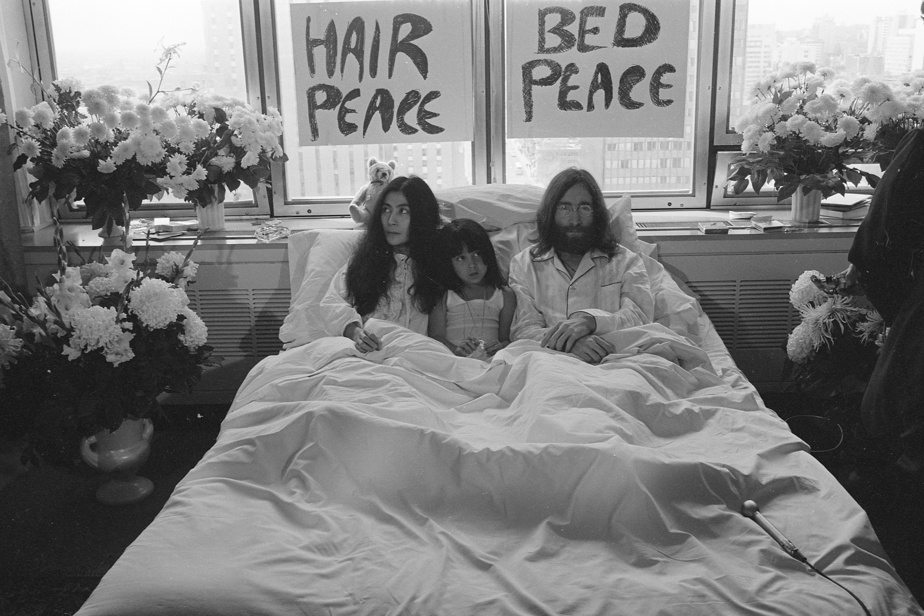
Get Back in bed
Shortly after their marriage, from March 25 to 31, 1969, Lennon and Ono staged their first bed-in protest at Amsterdam’s Hilton Hotel. They invited the press, wore pajamas, and sat in bed with signs reading “Hair Peace” and “Bed Peace” to protest the Vietnam War. The event drew significant media attention but was dismissed as just another publicity stunt.
On April 11, 1969, the Beatles released “Get Back” as a single in the UK. It debuted at number one, which reaffirmed their global influence, and remained at the top for six weeks, spending a total of 17 weeks on the chart.
However, by this time, Lennon admitted he was no longer making conscious creative decisions, describing recording with the Beatles as more of a routine and sometimes tedious job.
“I wasn’t consciously making any decisions. It was all sort of subconscious, and I just made the records of the Beatles like one goes to one’s job at nine in the morning, you know. I mean, Paul or whoever would say it’s time to make a record. I’d just go in and make a record, you know, not think too much about it. Always sort of enjoy the session if it was a good session, you know. If we got our rocks off playing, it was fine. If it was a drag, it was a drag,” said Lennon. “But it was becoming, it’d become a job.”
Lennon found a new purpose with peace activism, and with Ono, they staged their second “Bed-In for Peace” protest, this time in Montreal from May 26 to June 2, 1969, at the Queen Elizabeth Hotel. During this week-long event, which gained massive media attention, journalists and guests were invited to their hotel suite to speak about peace and protest the ongoing Vietnam War. It was during this bed-in that Lennon recorded “Give Peace a Chance,” which became an anthem for the anti-war movement.
In the months following the bed-in, Lennon increasingly distanced himself from the Beatles. He was creatively unsatisfied and increasingly detached. On September 20, 1969, Lennon told his bandmates that he was leaving the Beatles, saying he wanted a “divorce.” Though kept secret from the public, this marked the true end of the Beatles and the beginning of Lennon’s solo career.
McCartney said, “The point of it really was that John was making a new life with Yoko. John had always wanted to sort of break loose from society because, you know, he was brought up by his Aunt Mimi, who was quite repressive, so he was always looking to break loose.”
In the aftermath of the Beatles’ breakup, retreating from the pressures of Beatlemania and the band’s internal struggles, Lennon focused on creating music that reflected his ideals of peace and social change, which were deeply personal and politically charged.
By 1971, he had settled into life with Ono at their Tittenhurst Park estate in England, where he began working on new material. In the master bedroom of their home, inspired by Ono’s poetry, particularly her book Grapefruit, and motivated by his peace activism, Lennon wrote “Imagine.”
Lyrically: Imagine by John Lennon
On Sunday, May 23, 1971, Lennon recorded a raw solo demo of Imagine at his home studio, Ascot Sound, in Tittenhurst Park, just his vocals and a piano in a single take, which was engineered by Phil McDonald.
Four days later, on May 27, Lennon returned to the studio with session musicians Alan White on drums and Klaus Voormann on bass. Imagine was recorded in 10 takes, with the final attempt becoming the master. Then, on July 4, the Flux Fiddlers, who were members of the New York Philharmonic, added orchestral strings at the Record Plant in New York, completing the song.
Although initially credited solely to Lennon, “Imagine” was a collaboration. Inspired by Ono’s conceptual art book Grapefruit, Lennon acknowledged the impact Ono had and that she co-wrote the song. “Imagine” was co-produced by Lennon, Ono, and Phil Spector.
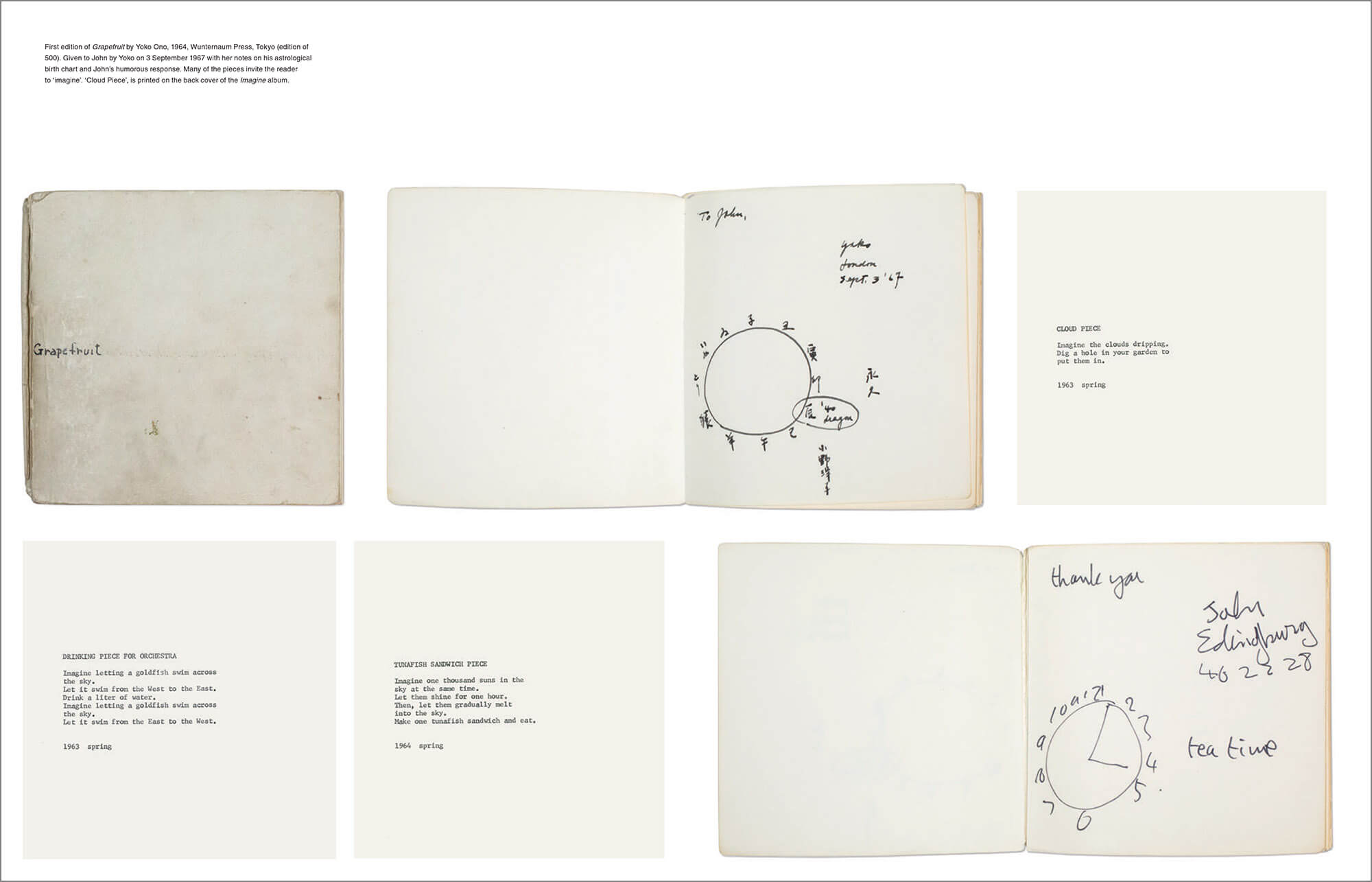
Ono stated that “Grapefruit is a book of doing things. It’s not adjective or noun, but verb. That’s why it’s better than the Bible. To understand the pieces, you must do them. Even doing them in your mind is making a step part of the way along the road to better communication with yourself.”
“‘Imagine’ was inspired by Yoko’s Grapefruit. There’s a lot of pieces in it saying like, ‘Imagine this’ or ‘Imagine that.’ If you get a copy of Grapefruit and look through, you’ll see where I was influenced by her. ‘Imagine’ could never have been written without her. And I know she helped on a lot of the lyrics, but I wasn’t man enough to let her have credit for it. So that song was actually written by John & Yoko, but I was still selfish enough and unaware enough to take her contribution without acknowledging it,” said Lennon. “The song itself expresses what I’d learned through being with Yoko and my own feelings on it. It should really have said ‘Lennon/Ono’ on that song, because she contributed a lot of that song.”
In 2017, Ono was officially added as a co-writer on “Imagine” by the National Music Publishers Association, recognizing her essential contributions decades after its release.
The opening lyrics of “Imagine” invite listeners to envision a world without divisions. “‘Imagine’ is a song conceived in my head without melody. The first verse came to me very quickly in the form of a childlike street chant ‘da da da da da dee dee, da dee da ee a eeeh.’ The piano intro I’ve had hanging around in my head for a few years – the chords and melody followed naturally from this,” said Lennon.
Imagine there’s no heaven
It’s easy if you try
No hell below us
Above us, only sky
These lines connect directly to Ono’s poem “Cloud Piece” from Grapefruit, which reads: “Imagine the clouds dripping. Dig a hole in your garden to put them in.” Lennon drew heavily from this poem for the song’s hopeful vision, a rebirth in thinking that invites others to shift from a single focused “you” mentality to a together “us” mentality where there is a world with no heaven or hell, just an open sky.
Imagine all the people
Livin’ for today
Ah
When people let go of expectations, they can live in harmony, day after day. The inclusion of “Ah” seems intended to represent an exhale, a moment where one can breathe easy.
Imagine there’s no countries
It isn’t hard to do
Nothing to kill or die for
And no religion, too
“First of all, conceive of the idea of no nation, no passport. If you’re not defending a nation, there’s nothing to fight about. We’ve said it a million times. We’re not the first to say ‘Imagine No Countries’ or ‘Give Peace a Chance’, but we’re carrying that torch, like the Olympic torch, passing it hand to hand, to each other, to each country, to each generation… and that’s our job,” said Lennon. “We were early pioneers of that movement to project a future where we can have goals that we can reach. Right? People project their own future. So, what we wanted to do was say, ‘Let’s imagine a nice future.’”
Lennon also acknowledged another source of inspiration for the song came from a Christian prayer book that was given to him in 1969 by entertainer and civil rights activist Dick Gregory. Lennon said it gave him a concept that helped shape “Imagine,” stating, “Dick Gregory gave Yoko and me a little kind of prayer book. It is in the Christian idiom, but you can apply it anywhere. It is the concept of positive prayer. If you want to get a car, get the car keys. Get it? Imagine is saying that. If you can imagine a world at peace, with no denominations of religion – not without religion but without this my-God-is-bigger-than-your-God thing – then it can be true.”
Imagine all the people
Livin’ life in peace
You
Once you can imagine a world with all the people living for today, living in peace, living for each other, “then it can be true” and Lennon says “you” can do this as “It’s easy if you try” and “It isn’t hard to do.”
You may say I’m a dreamer
But I’m not the only one
I hope someday you’ll join us
And the world will be as one
These lyrics are written in conversational way between two people, encouraging the other to dream of living this lifestyle and hoping that “someday you’ll join us.”
The song’s message builds through a subtle but meaningful shift. It uses “And the world will be as one” in the middle verse, then closes with “And the world will live as one.” The change from “be” to “live” moves those who connect to the meaning from an ideal state of oneness to active, everyday peace everywhere. This takes the song’s message from hope to reality.
“John and I were both artists and we were living together, so we inspired each other. And the song ‘Imagine’ embodied what we believed together at the time. John and I met, he comes from the West and I come from the East, and still we are together. We have this oneness and ‘the whole world would eventually become one’ is the sense that we will all be café-au-lait colour and we will all be very happy together,” stated Ono.
Imagine no possessions
I wonder if you can
No need for greed or hunger
A brotherhood of man
Imagine all the people
Sharing all the world
You
These verses remove the desire for perceived needs and imagine a world based on an alliance of people, sharing for each other.
“The light is the truth. All any of us are trying to do is precisely that: turn on the light,” said Lennon. “It’s one world, one people. And it’s a statement as well as a wish. We’re one world, one people whether we like it or not. We can pretend we’re divided into races and countries, and we can carry on pretending that until we stop doing it.”
“When I first heard the finished version of this song, I was in a room in Ascot in England with John and my first thoughts were that it would be a hit,” said Ono. “The lyrics were just so beautiful. We both liked the song a lot, but we honestly didn’t realize it would turn into the powerful song it has, all over the world. We didn’t realize it would be that big. We just did it because we believed in the words and it just reflected how we were feeling.”
“Imagine” was released as a single in the United States on October 11, 1971, reaching number three on the Billboard Hot 100. The song topped the charts in Canada, Australia, and South Africa, but it wasn’t released as a single in the UK until 1975, where it peaked at number six. Following Lennon’s death on December 8, 1980, the song re-entered the UK chart and spent four weeks at number one in January 1981.
Rolling Stone included “Imagine” on its list of the “500 Greatest Songs of All Time,” and the song earned a Grammy Hall of Fame Award and was inducted into the Rock and Roll Hall of Fame’s “500 Songs that Shaped Rock and Roll.”
The song became one of the most influential peace anthems of the 20th century. Lennon, who described “Imagine” as “‘Working Class Hero’ with sugar on it,” later explained its enduring appeal as “Anti-religious, anti-nationalistic, anti-conventional, anti-capitalistic, but because it is sugarcoated it is accepted. Now I understand what you have to do. Put your political message across with a little honey.”
